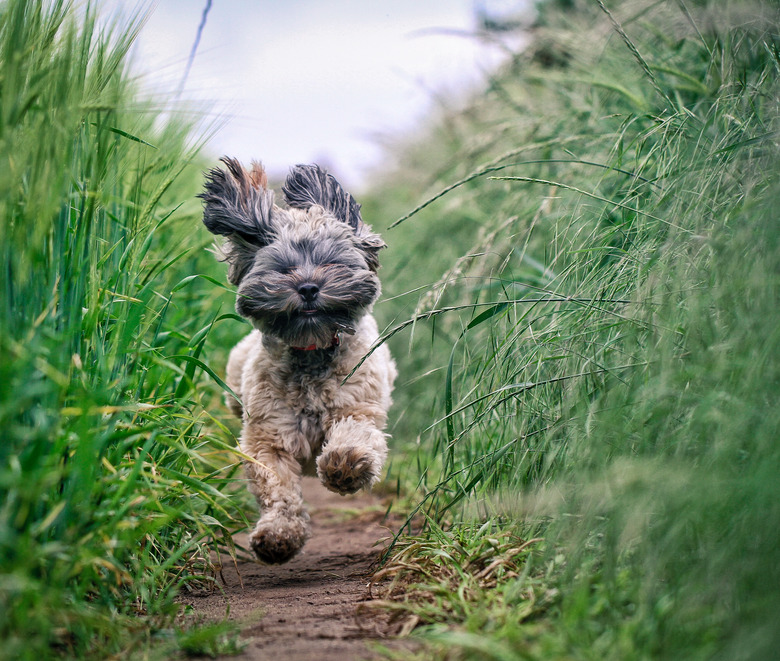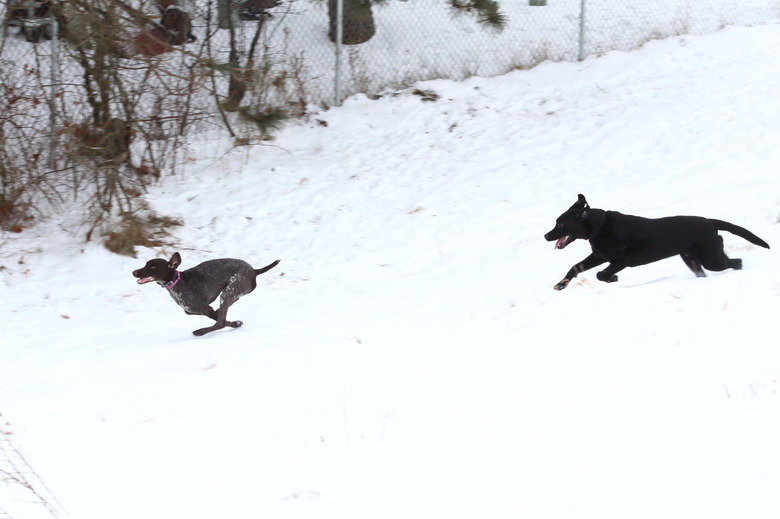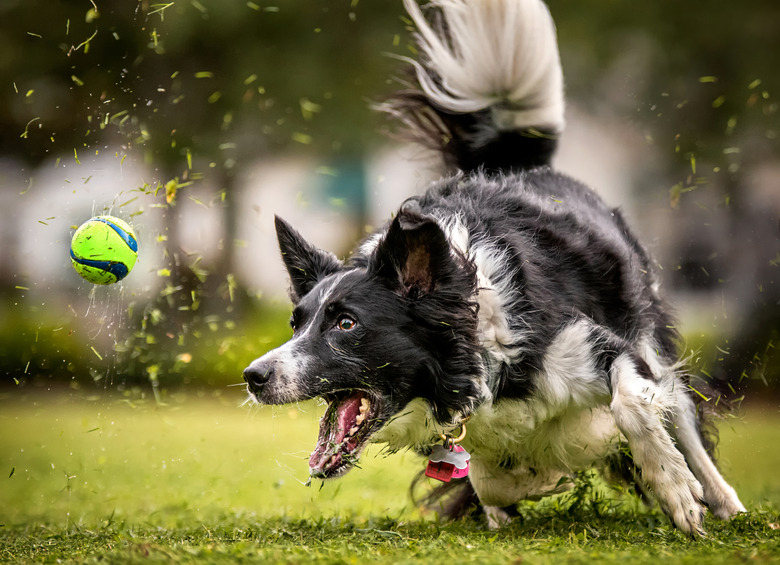What Are Dog Zoomies And What Causes Them?
I remember the moment clearly. It was the first week after we adopted our rescue dog, Phoenix. We had just let her out from her crate to do her afternoon potty break. The ritualistic 5 minutes of sniffing the perimeter ensued before her bathroom break, then we headed back inside.
As soon as the leash unhooked from her collar, it was as if I had released a wild animal back into its habitat. Phoenix darted across the room, then whooshed past me in a frantic fervor, then back into the living room, coming within inches of the wooden stand bracing the flat-screen T.V. It was official—Phoenix had been afflicted with a case of the zoomies.
I should have noticed the widening of her pupils, as she gazed at my idle hands before darting throughout the room. The overstimulated look in the eyes of her 55-pound body said it all. Though they may seem concerning at first, zoomies are actually a natural part of a dog's behavior.
What are zoomies?
What are zoomies?
A "zoomie" is an explosion of energy, also referred to as a Frenetic Random Activity Period or a FRAP. FRAPSs, or "frapping," is an expression of built-up energy that has not been allowed to be expelled. This can be in the form of restrained physical energy, or from nervous energy due to a stressful situation. Though most common in younger dogs and puppies, dogs of any age may experience the zoomies.
The signs a FRAP or "zoomie" is happening will be apparent. Indicators include overly excited eyes, breaking into a gallop or sprint from a still position, darting back and forth, a squatted run, suddenly breaking into a gallop from standing still, or possibly engaging in tight turns and spinning to take off in the other direction.
What causes zoomies?
What causes zoomies?
There are a variety of reasons your dog may engage in a zoomie session. Zoomies are a way for dogs to release excess energy, so commonly they occur when a dog is highly energized. Moments of high energy may include a morning after a restful night, after being confined all day long, after a triggering an event such as a bath or groom, after watching another dog who is currently experiencing a zoomie, or even after a stressful moment.
Zoomies are most common among young dogs and puppies, but it is not uncommon for an older dog to experience a bout of high excitement. However, if you find your dog is experiencing zoomies regularly, evaluating the level of activity your dog receives each day may be in order.
Are zoomies safe?
Are zoomies safe?
Zoomies are completely safe for dogs to engage in, so long as it is within a safe environment. It is not a behavior that needs to be discouraged or prevented, so long as it is within a controlled location. Understanding why zoomies are happening can help you better plan for when they will occur in or to create a safe environment for them to zoom. If your dog consistently engages in a zoomie after his crate time or a bath, you now know a triggering situation for your dog, and that you will most likely experience a zoomie afterward.
However, predicting a zoomie is not always possible and it can lead to a dangerous situation in an uncontrolled environment, such as an unfenced yard or around small children. It is imperative not to chase your dog, which will only encourage her to continue running. Encouraging your dog to come to you with praise, high-value treats, or even toys will help prevent a situation from escalating.
Zoomies are a behavior that is natural for dogs, and that be fun for them and effective in expelling energy when done in a safe environment. However, if you believe that your dog excessively engages in zoomies, it may be a sign of a larger issue. It is always best to consult with your veterinarian or a certified applied animal behaviorist if your dog engages in a behavior that seems excessive, or if their behavior changes suddenly.


